Odoo is an ERP software comprising various business management tools like CRM, e-commerce, invoicing, accounting, manufacturing, warehouse, project management, sales, purchase, HR management, and inventory management. QuickBooks is an accounting software package marketed and developed by Intuit.
In this blog, we can discuss the Odoo-Quickbooks connector application(technical name-quickbooks_odoo_import_export) available in the Odoo App store. This application can be used to export/import various records like products, categories, charts of accounts, employees, customers, vendors, departments, tax agencies, taxes, sale orders, invoices, purchase orders, bills, payments, etc. Linked transactions are also possible with this application.
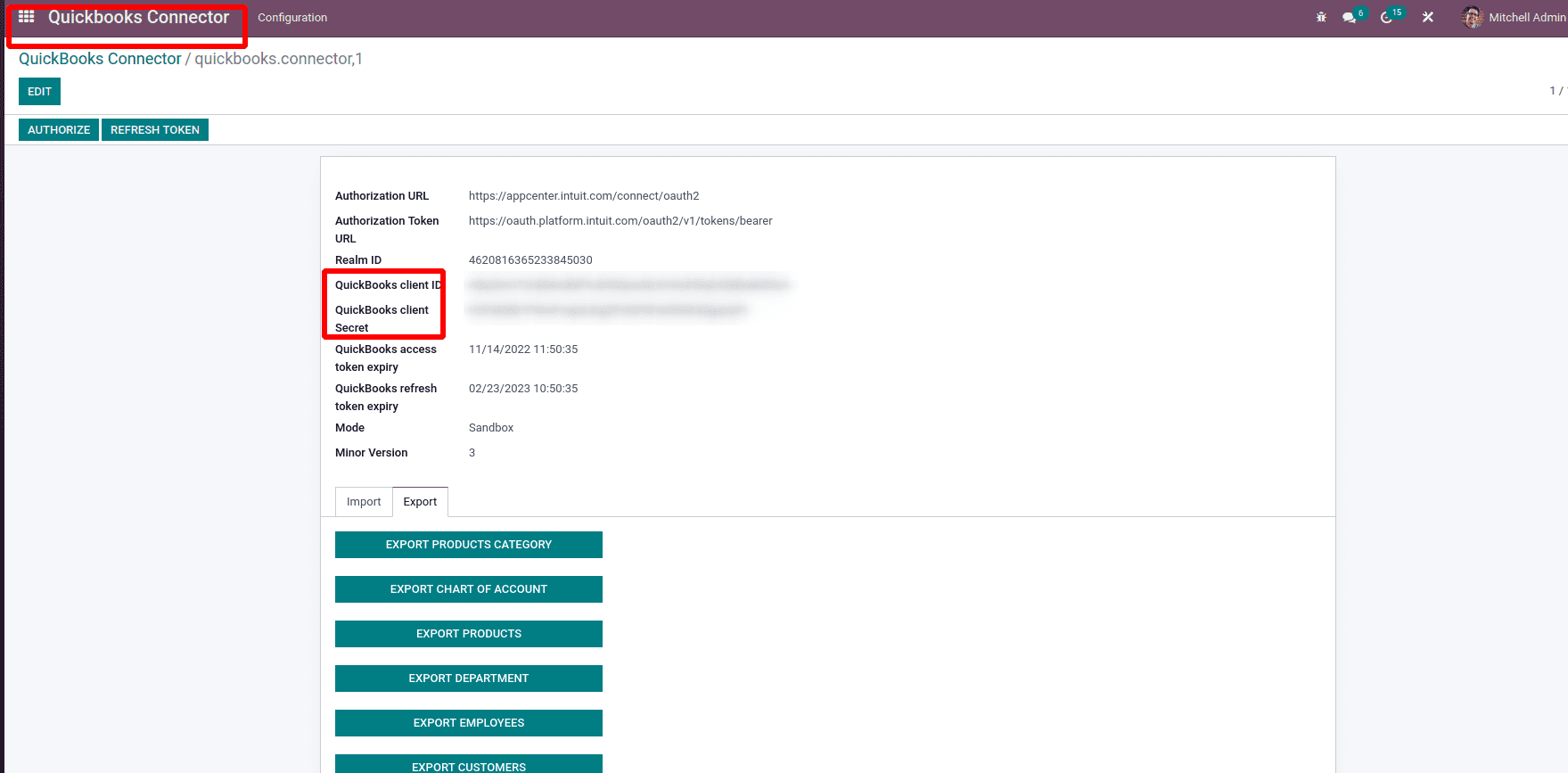
Above is the connector application form view, from there fill in the following fields,
QuickBooks client ID and QuickBooks client Secret in the given fields. The credentials can be obtained from the application settings of the developer account. You can use the following link https://developer.intuit.com and create the app from the dashboard,
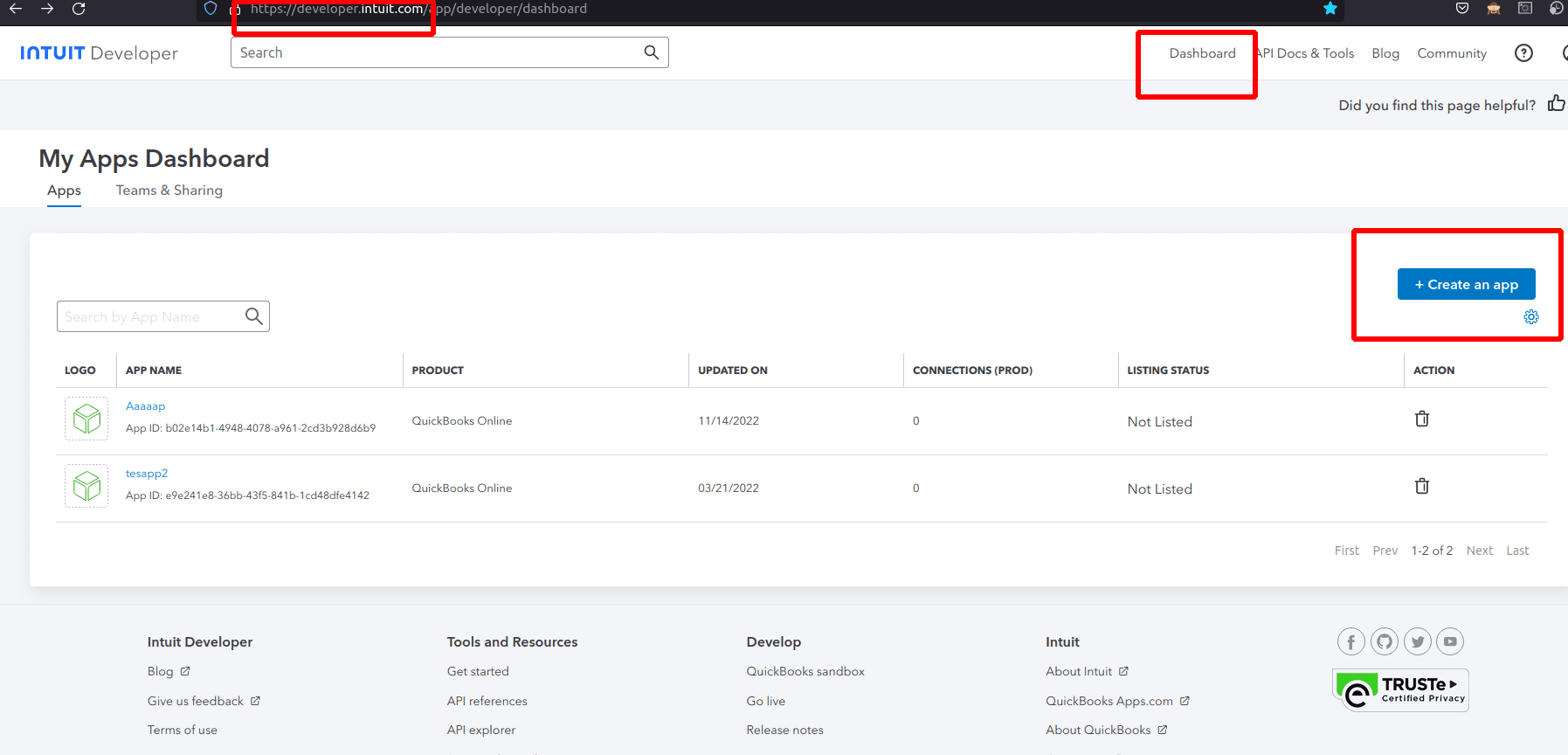
By clicking on the app link, it will get us to the app settings, from there we can get the keys and credentials to be filled in the Quickbooks connector app.
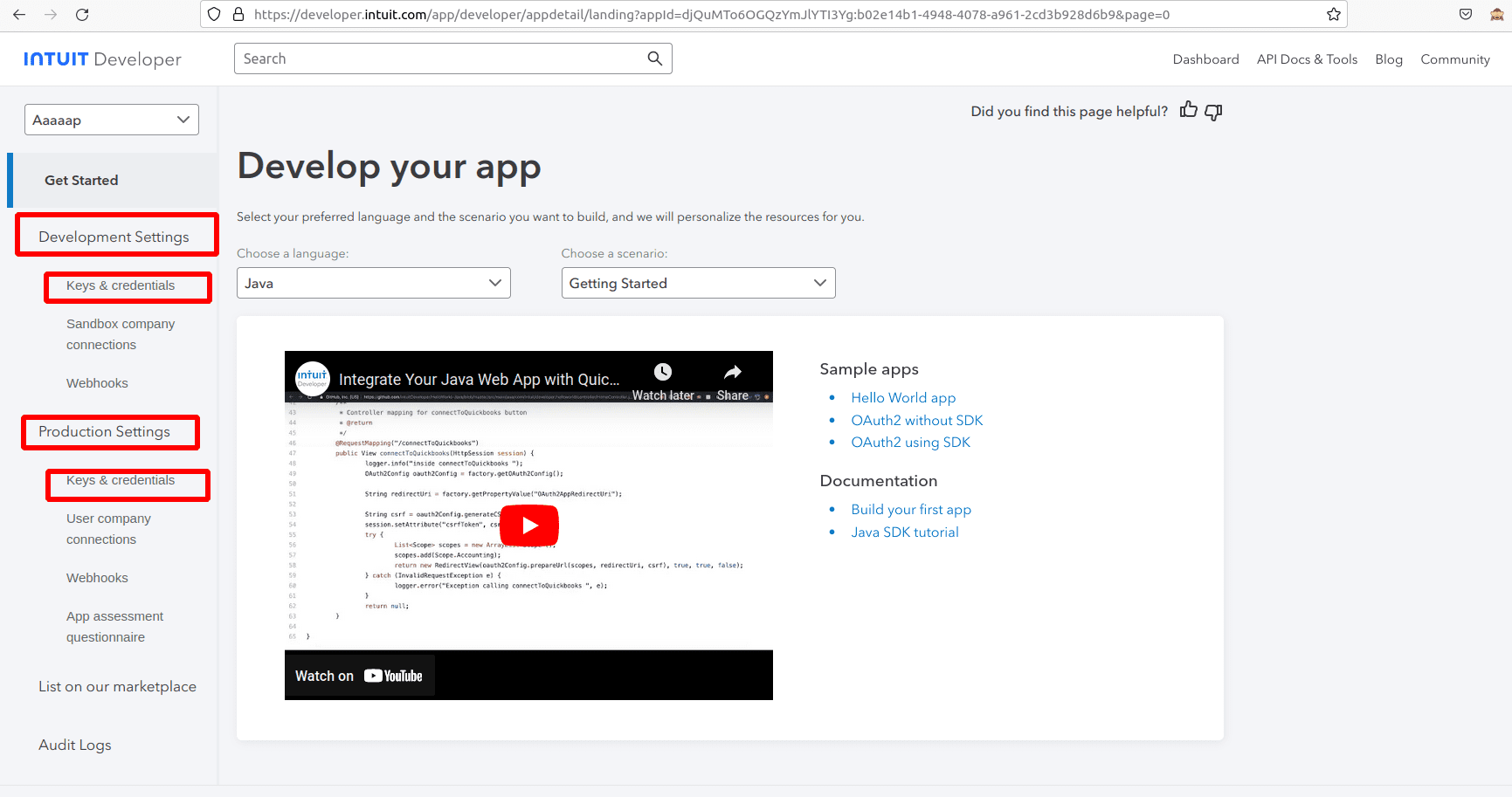
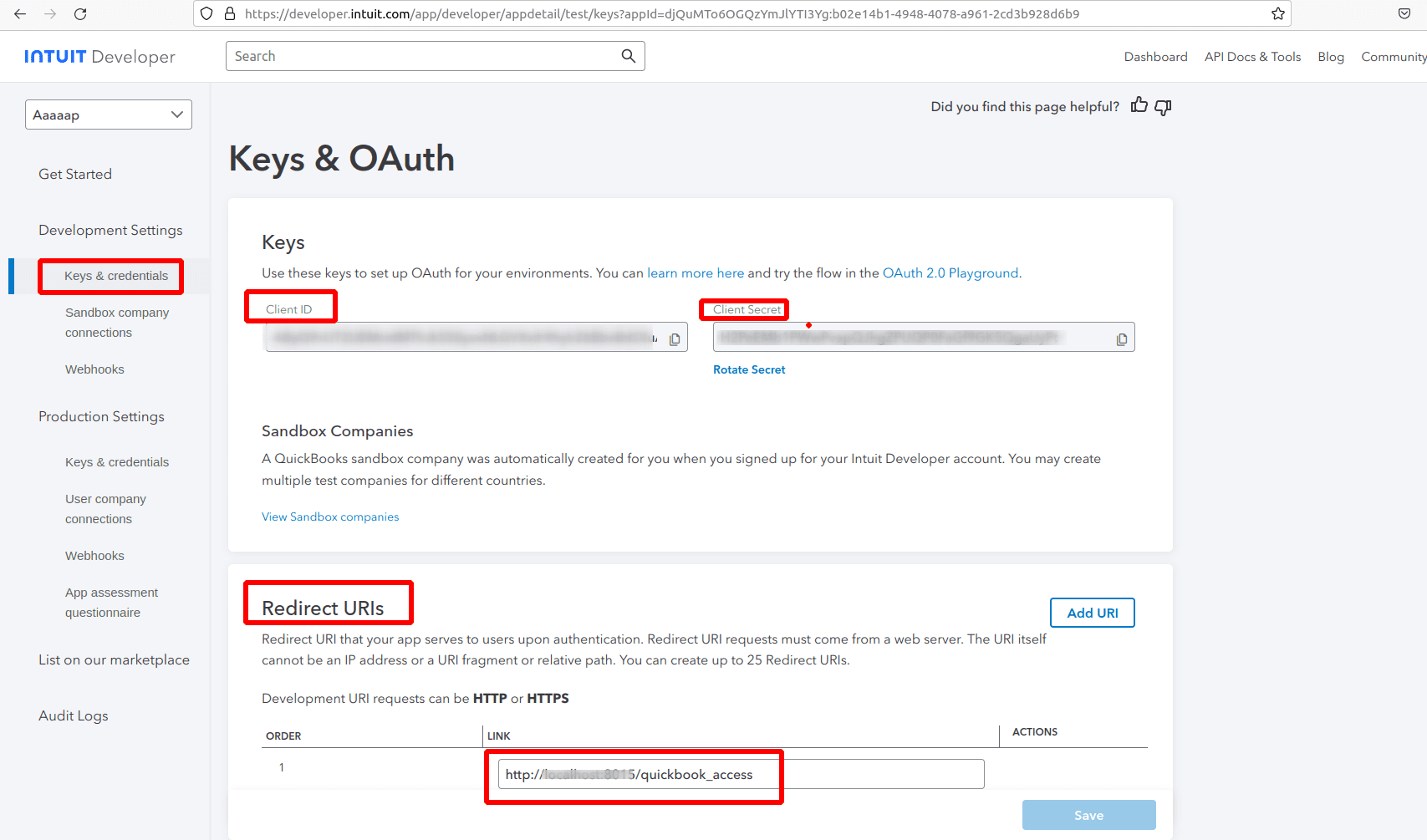
As given in the above picture from the app setting, we can get the client Id, and client secret, and we can fill in the redirect URI in the provided field.
The redirect URI will be the base URL plus the controller URL (/quickbook_access),
Eg: http://localhost:8015/quickbook_access
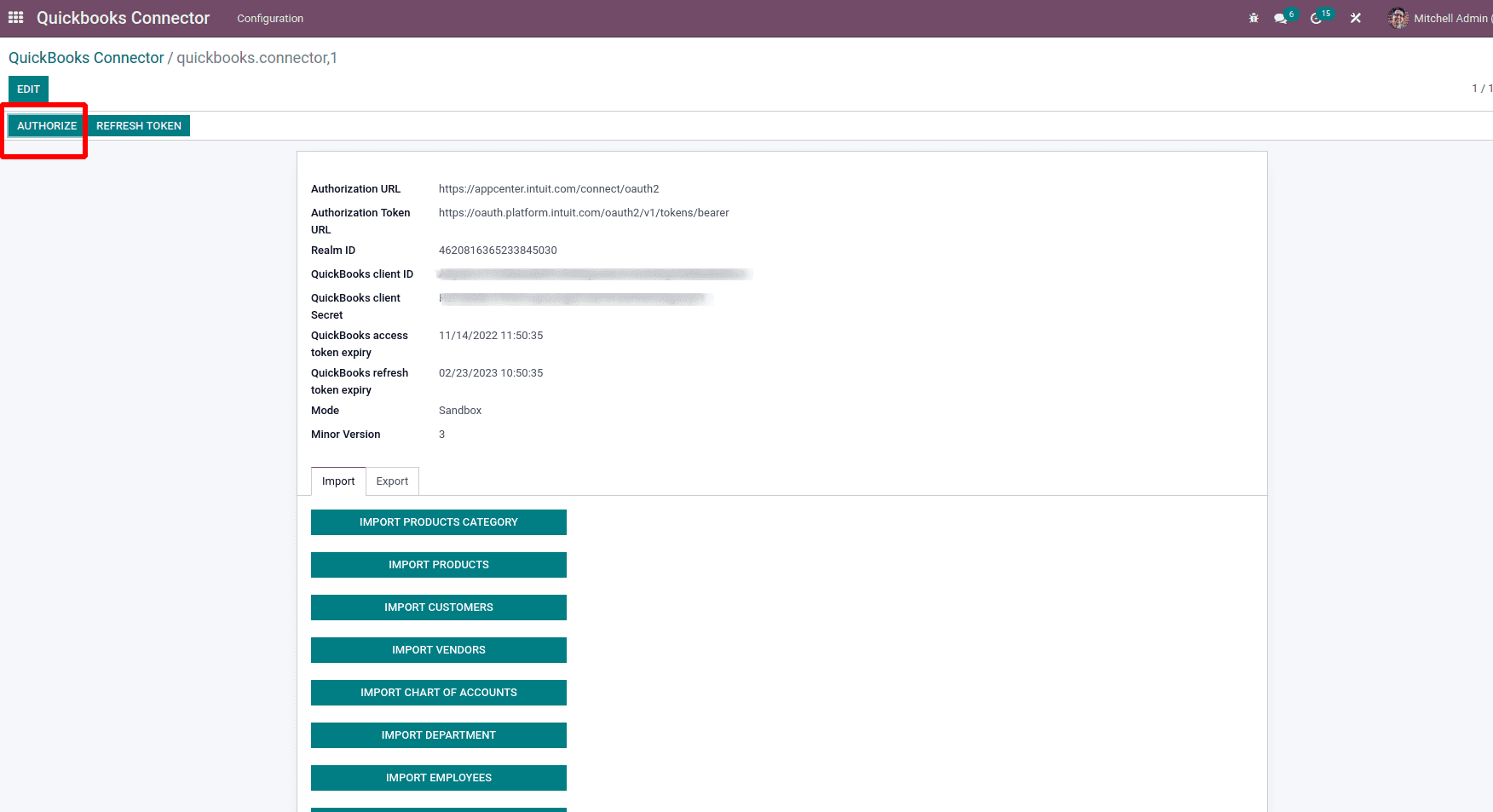
After filling in the client id and client secret click on the authorization button for authentication. One can use the refresh token button for a token refresh. After successful authentication, it will be redirected to the connector app. From there can start the import and export of the following records using the connector.
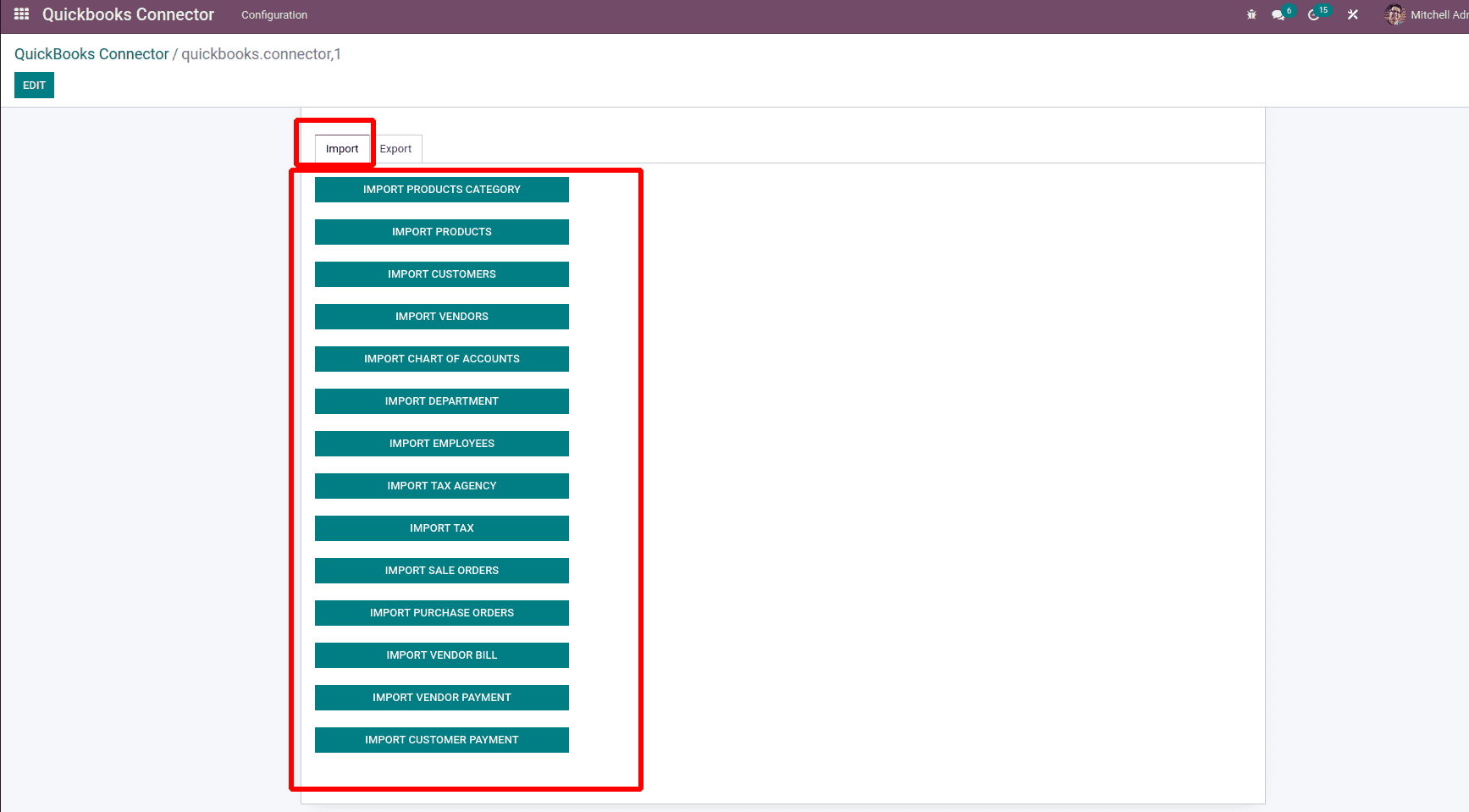
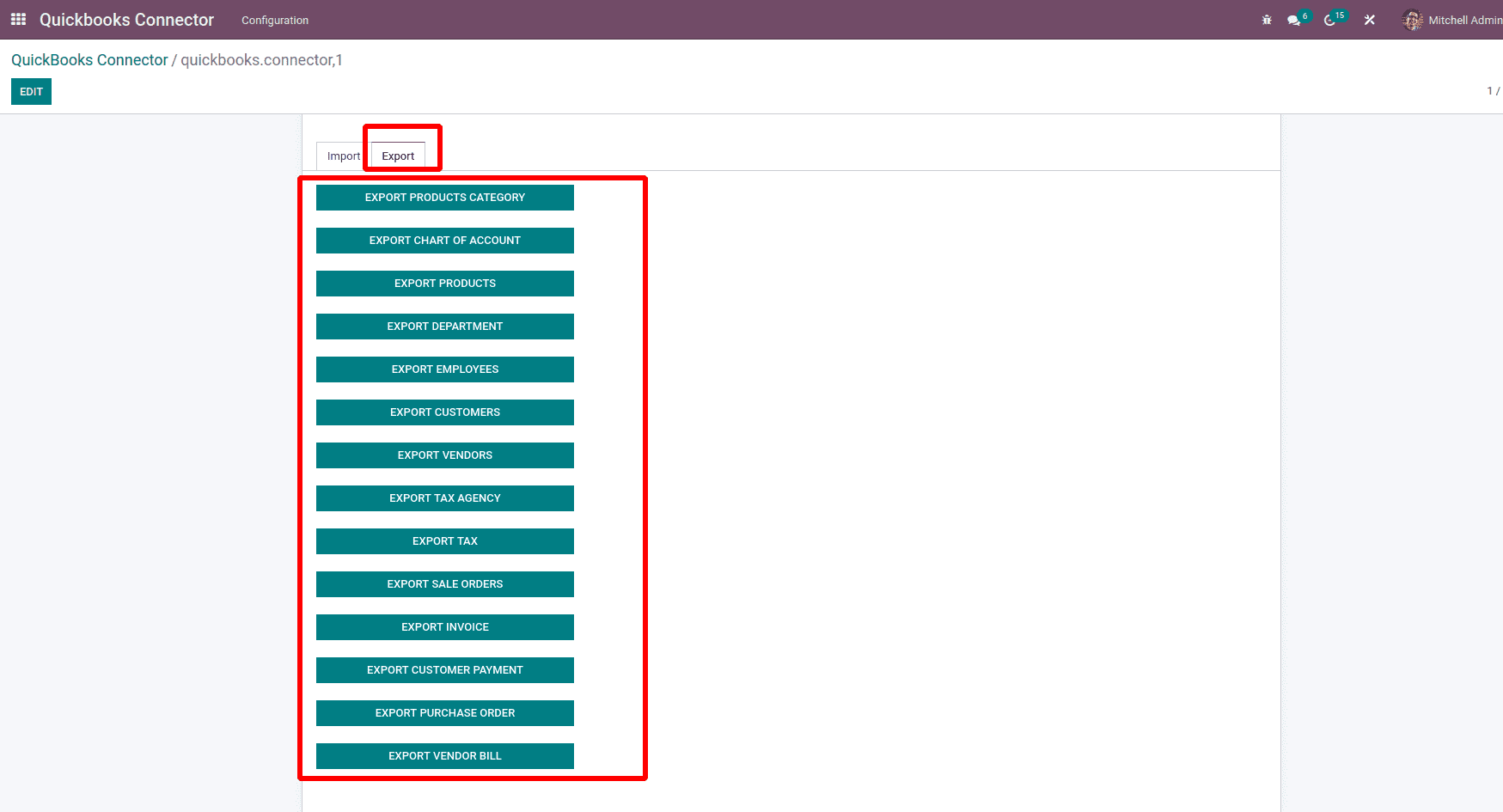
Above, we have discussed the basic setup of the Odoo Quickbooks connector app and its usage. For further queries, feel free to contact.